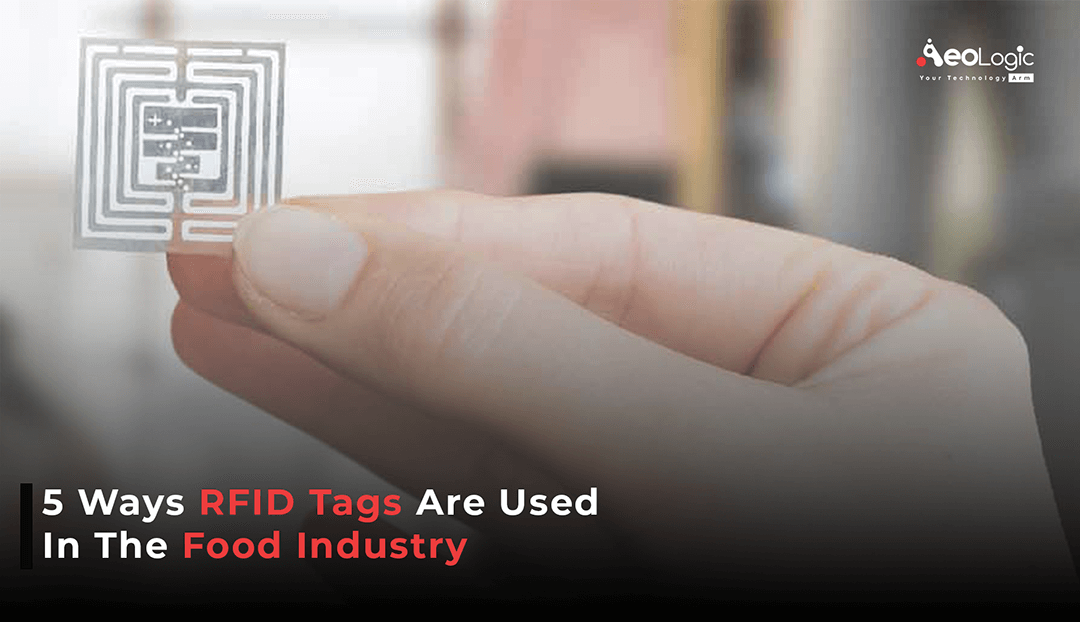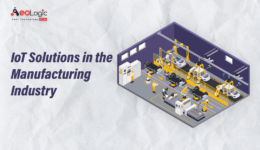RFID technology is considered to be the best in the industry when it comes to better handling of raw materials and finished products in the food industry. Traditionally, barcodes have been used to give an identification of an individual product. RFID has been evolved drastically and now considered to be the advanced technology that has been recently used to pace the handling of manufactured food and materials.
RFID technologies use radiofrequency waves to identify an object. RFID is capable identify an object from a distance without requiring a line of sight. RFID tags can also incorporate additional data which can be fetched easily details such as product name and manufacturer name. RFID can also transmit measured environmental factors such as temperature and relative humidity.
Components of an RFID system
1. RFID Tag:
An RFID tag, also known as a transporter or carrier, is a small device that can be attached to any object so that the object could be tracked and identified. RFID tags or passive tags do not require any power source, they derive power from the signal received from the reader. Therefore, they require a strong signal from the reader and thereafter transmits a weak signal to the reader.
2. Antenna:
The antenna is a conductive element that creates a bond between the tag and an RFID reader. Both the reader and tag of an RFID system have antennas with the help of which the system will be able to communicate with each other.
3. Software:
It allows the user to utilize the information transmitting from the tags which enable the user to make business-related decisions and take actions.
5 Ways RFID Technology are Used in the Food Industry
There are numerous applications of RFID technology in the food industry including supply chain management, temperature monitoring of foods, and ensuring food safety, traceability & reduce food waste and customer satisfaction.
1. Supply chain management:
In supply chain management, RFID tags are the most vital thing as they will be in use to track food products during distribution and storage to prevent blot. As RFID systems do not require line of sight to read the tag, their range of operation is larger as compared to that of a barcode, readers can simultaneously interact with multiple RFID tags, and tags that can store more data as compared to a barcode.
RFID technology has been widely used by food manufacturers to trace food products along with the supply chain with great accuracy. Customers can find the entire history of the cheese after purchase by entering an alphanumeric code on a website, this gives them assurance and great customer satisfaction.
2. Temperature Monitoring:
An ideal RFID based system is capable to monitor the shelf life of foods to which they are attached. The tags are capable to sense temperature and integrate it over time to determine the shelf life of a product, which can be communicated to a reader.
An RFID-based temperature data logger is capable of storing up to 13000 temperature readings in its memory, which can be retrieved using a reader at distances of up to 100 m. Datalogger can be used to monitor and log the internal temperature of food during processing. The range of operation for this data logger can be from −40 to 85 ◦C.
Boost your business with our RFID Solutions!
3. Food Safety:
RFID systems are very popular in the food industry as they can be widely used to ensure that food products such as dairy products, fruit, meat and bread remain within a safe temperature range during transportation and storage.
RFIDtagcan functions as a temperature data logger and as a supply-chain tracking tool. The range of operation for this datalogger can vary depending upon the requirement. However, you can find it to be operating up to -40 to 85 ◦C.
4. Traceability and Reduce food waste:
Looking for the high demands on the package foods, consumers are also demanding high transparency regarding food sources and procedures. It makes sense, as consumers are putting those foods into their bodies. This is why RFID tags are being widely used in the food industry. As previously mentioned, RFID tags can store specific information about any object where it is placed on.
RFID carries information like type, quantity, and origin which are vital pieces of information to collect during a product’s life-cycle. For example, when an RFID tag is placed on a specific container of a particular product, anyone can scan the RFIDto get the details about the product and its backlog.
This information is particularly most valuable for the food industry, especially when tracing food waste. With a growing demand and resources depletion, locating food sources is even more critical today to find solutions in preventing food waste. Thus, RFID tags play a crucial role in the food industry and the world as a whole.
5. Customer satisfaction:
Implementing a small change and introducing a small tag into the existing system gives a larger picture to its end users. It helps to create a more positive customer experience. As the food history can be fetched by the customer, they will show more trust towards the product and also helps the company to generate more income.






